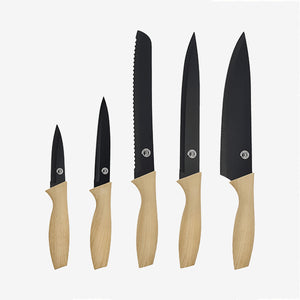How to Make the Cut
Choose the versatile chef’s knife for a wide range of tasks including chopping, slicing, dicing, and mincing, whereas the short and pointed paring knife makes intricate cuts, such as peeling and trimming fruit and vegetables.
Other knives include the thin flexible fish filleting knife for precise cutting and bone removal; the broad heavy cleaver for chopping through bones and dense meats; the long narrow carving knife for evenly slicing cooked meat; the long serrated bread knife for slicing baked goods without crushing or tearing; the santoku knife for cutting vegetables with its flat edge and round tip; the narrow flexible boning knife is perfect for skinning and deboning meat and poultry.
To keep you ‘a cut above the rest’ you should: use a claw grip for a more effective way to hold a knife – just place your index finger on the top of the blade, just behind the handle, then, curl your other fingers around the handle; use a cutting board for a stable surface and protecting your knives and countertop; cut away from your body to help to prevent you from cutting yourself; don't overload your knife as trying to cut too much at once, is more likely to see your knife slip; and finally, you should keep your knives sharp as a dull knife is more likely to slip.







